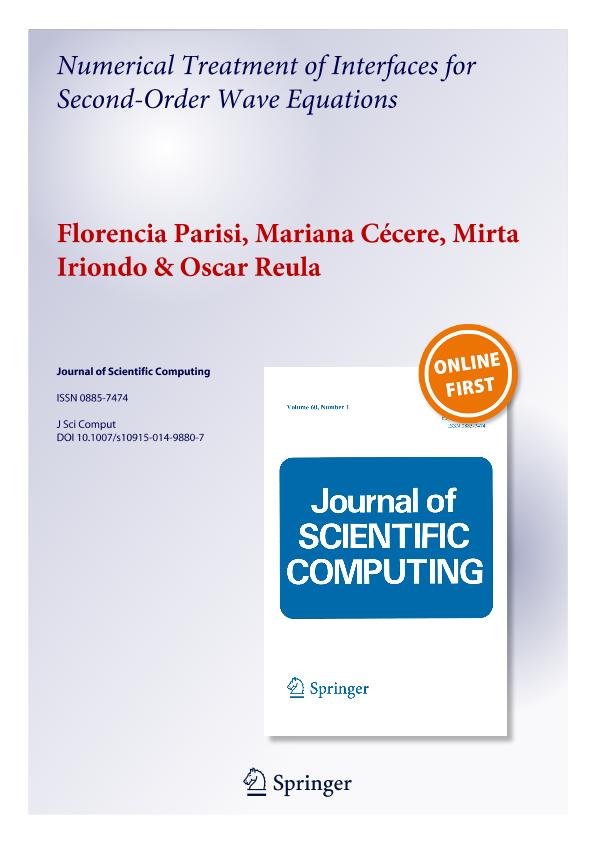Artículo
Numerical Treatment of Interfaces for Second-Order Wave Equations
Fecha de publicación:
06/2014
Editorial:
Springer/plenum Publishers
Revista:
Journal Of Scientific Computing
ISSN:
0885-7474
Idioma:
Inglés
Tipo de recurso:
Artículo publicado
Clasificación temática:
Resumen
In this article we develop a numerical scheme to deal with interfaces between touching numerical grids when solving the second-order wave equation. We show that it is possible to implement an interface scheme of “penalty” type for the second-order wave equation, similar to the ones used for first-order hyperbolic and parabolic equations, and the second-order scheme used by Mattsson et al. 2008. These schemes, known as SAT schemes for finite difference approximations and penalties for spectral ones, and ours share similar properties but in our case one needs to pass at the interface a smaller amount of data than previously known schemes. This is important for multi-block parallelizations in several dimensions, for it implies that one obtains the same solution quality while sharing among different computational grids only a fraction of the data one would need for a comparable (in accuracy) SAT or Mattsson et al.’s scheme. The semi-discrete approximation used here preserves the norm and uses standard finite-difference operators satisfying summation by parts. For the time integrator we use a semi-implicit IMEX Runge–Kutta method. This is crucial, since the explicit Runge–Kutta method would be impractical given the severe restrictions that arise from the stiff parts of the equations.
Archivos asociados
Licencia
Identificadores
Colecciones
Articulos(IATE)
Articulos de INST.DE ASTRONOMIA TEORICA Y EXPERIMENTAL
Articulos de INST.DE ASTRONOMIA TEORICA Y EXPERIMENTAL
Articulos(IFEG)
Articulos de INST.DE FISICA ENRIQUE GAVIOLA
Articulos de INST.DE FISICA ENRIQUE GAVIOLA
Citación
Reula, Oscar Alejandro; Cécere, Mariana Andrea; Iriondo, Mirta Susana; Parisi, Maria Florencia; Numerical Treatment of Interfaces for Second-Order Wave Equations; Springer/plenum Publishers; Journal Of Scientific Computing; 60; 3; 6-2014; 875-897
Compartir
Altmétricas




